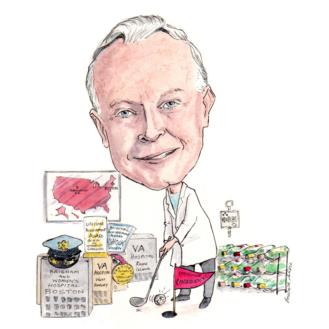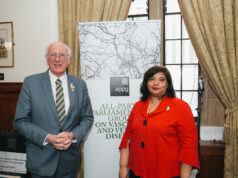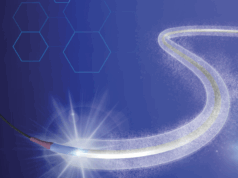
Vascular News talks to John Mannick of the Brigham and Women’s Hospital about entering vascular surgery by the toss of a coin, and winning recognition from the Society of University Surgeons and the Society for Vascular Surgery.
When did you first decide you wanted a career in medicine?
I first decided I wanted to go into medicine as a senior in high school in Yakima, Washington, USA.
Why did you decide to enter into vascular surgery?
Like many general surgical residents of my day I thought that the new field of vascular surgery was simply a part of general surgery. My first postresidency job in 1960 was as a junior faculty member in the department of surgery at the Medical College of Virginia. The department chairman was David Hume, who, in addition to pioneering the new field of transplantation, had special clinical interests in vascular surgery and endocrine surgery. In 1961 Hume decided that his two full-time junior faculty members, Richard Egdahl and I, should specialise in endocrine or vascular surgery. Both Egdahl and I told him that we were interested in both fields. Therefore Hume decided to toss a coin to decide which of us specialised in what. I got vascular surgery and I was not at all displeased with the outcome. During my residency at Massachusetts General Hospital I had been fortunate enough to have two rotations on the service of Robert Linton, one of the pioneers of vascular surgery. I felt I had learned a lot from him, in particular his technique for performing autogenous vein bypass grafts in the lower extremities. Linton had perfected the technique of broad spatulated vein graft anastamoses, which he had learned from Kunlin in Paris.
Who have been your greatest influences?
As a clinical vascular surgeon I was most influenced by Robert Linton, E Stanley Crawford – whom I was fortunate enough to have as my first chief resident when I was an intern at Massachusetts General Hospital – and by Michael DeBakey, the great systematiser of major vascular operations. As a researcher and teacher I am greatly indebted to E Donnall Thomas (Nobel Laureate 1990), who supervised my research fellowship, and to David Hume, and particularly Richard Egdahl, who taught me how to function as an academic surgeon.
On a professional level, what have been your proudest moments?
My proudest professional moments include the successful application of vein grafts to reconstruction of the tibial and peroneal arteries, the reduction of mortality from abdominal aortic aneurysm repair from more than 5% to less than 2% through the use of volume loading and minimal disection of the aorta and iliac arteries, the use of axillo-femoral and femoro-femoral grafts to correct aortoiliac occlusive disease in certain high risk patients, and the demonstration that autogenous tissue reconstruction techniques can be applied with very high rates of long term success in over 90% of patients with limb-threatening femoropopliteal and infrapopliteal occlusive disease. I have, of course, been gratified by election to the presidency of the Society of Vascular Surgery, the North American Chapter of the International Society of Cardiovascular Surgery, the New England Society for Vascular Surgery, and the American Surgical Association. I am also grateful for honorary membership or fellowship in the Vascular Surgical Society of Great Britain and Ireland, the Canadian Society for Vascular Surgery, and the Royal Colleges of Surgeons of England, Edinburgh, Ireland, and Australasia.
I am also very pleased that nine of my former vascular fellows have become chiefs of vascular surgery at major university hospitals in the USA, and that two of them, Andy Whittemore and Craig Kent, have been elected presidents of the North American Chapter of the International Society for Cardiovascular Surgery and the Society for Vascular Surgery respectively.
As an investigator, I am most proud of the contributions made by our laboratory in defining the abnormalities of the immune system caused by severe injury and shock, which have been recognised by the Scientific Achievement Award of the Shock Society and the Lifetime Achievement Award of the Society of University Surgeons.
Vascular surgery has undergone many changes over the years – what do you think the most fundamental changes have been?
One of the most important changes that vascular surgery has undergone in my opinion is the recognition that competence in this field requires specialised training beyond that achieved in a general surgical residency. I’m also convinced that a more systemised operative approach , improved anaesthesia, and expert postoperative care have significantly enhanced the safety of most vascular operations. Of course, one of the most important recent changes in vascular surgery has been the recent application of minimally-invasive techniques for the treatment of both aneurysms and occlusive disease.
In your opinion, what are the main trends in vascular surgery at the moment and what can we expect to see in the near future?
As noted above, the vastly increased use of noninvasive, catheter-based procedures has markedly altered both the practice of and training in vascular surgery. While many of these procedures are of proven value, the long-term outcomes of the use of minimally-invasive techniques for the treatment of certain forms of occlusive disease are at present uncertain. My personal guess is that there will be a resurgence in the use of open surgery for repair of infrapopliteal and carotid occlusive disease. I am also concerned that vascular trainees at present will have little experience with such techniques as exposure of the upper abdominal and thoracoabdominal aorta, which remain a necessary part of the vascular surgeon’s armamentarium.
Tell us about the most memorable case you have ever treated.
As far as memorable cases are concerned, I believe my most pleasant surprise came from observing in 1961 that a saphenous vein graft to the peroneal artery would permit the salvage of a foot with gangrenous toes. I also recall a great sense of relief at the successful completion of the first combined coronary bypass and abdominal aortic aneurysm repair performed on our service.
What are your current areas of research?
As noted above, my current research interest is the immune consequences of injury and shock.
Outside of medicine, what other interests do you have?
Outside of medicine, my interests are grandchildren, travel with my wife, golf, and collecting wine.
FACT FILE
John Mannick
Born
1928, Deadwood, South Dakota, USA
Education
1949 AB (Harvard College, Cambridge, Massachusetts)
1953 MD (Harvard Medical School, Boston, Massachusetts)
Postdoctoral training and appointments (selected)
1953-1954 Surgical Intern, Massachusetts General Hospital, Boston
1954-1956 Captain, US Air Force, Flight Surgeon
1956-1958 Surgical Resident, Massachusetts General Hospital
1961-1964 Assistant Professor of Surgery, Medical College of Virginia
1964-1976 Consultant in Vascular Surgery, Veterans Administration Hospital, Providence, Rhode Island
1973-1976 Utley Professor of Surgery, Chairman, Division of Surgery, Boston University School of Medicine
1973-1976 Surgeon-in-Chief, University Hospital, Boston
1976-1994 Consultant in Vascular Surgery, Veterans Administration Hospital, West Roxbury, MA
1976-1994 Moseley Professor of Surgery, Harvard Medical School, Boston
1976-1994 Surgeon-in-Chief, Brigham and Women’s Hospital, Boston
1994-present Moseley Distinguished Professor of Surgery, Harvard Medical School, Boston
1994-present Surgeon-in-Chief, Emeritus, Brigham and Women’s Hospital
Memberships and professional societies (selected)
1948 Phi Beta Kappa
1961 American Board of Surgery, Director 1971-1977
1965 Society for Vascular Surgery; President 1980-1981
1988-2002 The Lifeline Foundation Board; President 1996-2002
1967 American Surgical Association; President 1989-1990; Membership Chairman 1981-1986
1968 International Society for Cardiovascular Surgery; Recorder 1975-1977; President 1990-1991
1973 Society of Surgical Chairman; Secretary/Treasurer 1985-1987; President 1987-1988
1973-1976 Editorial Board, New England Journal of Medicine
1980-1993 Editorial Board, Surgery
1981 New England Society for Vascular Surgery; President 1995
1984 Honorary Member, Royal Australian College of Surgeons
1986 Honorary Member, Canadian Society for Vascular Surgery
1986 Editorial Board, Journal of Vascular Surgery
1992 Honorary Fellow, Royal College of Surgeons of England
1992 Honorary Member Korean Surgical Society
1994 Honorary Fellow, Royal College of Surgeons of Edinburgh
1997 Honorary Fellow, Vascular Surgical Society of Great Britain and Ireland
1999 The New England Surgical Society Nathan Smith Distinguished Award
2000 Recipient of the Shock Society Scientific Achievement Award
2002 Recipient, American Association for Vascular Surgery Distinguished Service Award
2003 Doctor of Military Medicine and Surgery, Honorary, Uniformed Services University of the Health Sciences
2005 Society of University Surgeons Lifetime Achievement Award
2007 Royal College of Surgeons in Ireland Honorary Fellows












